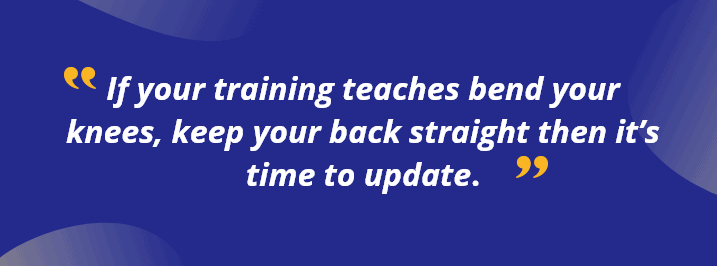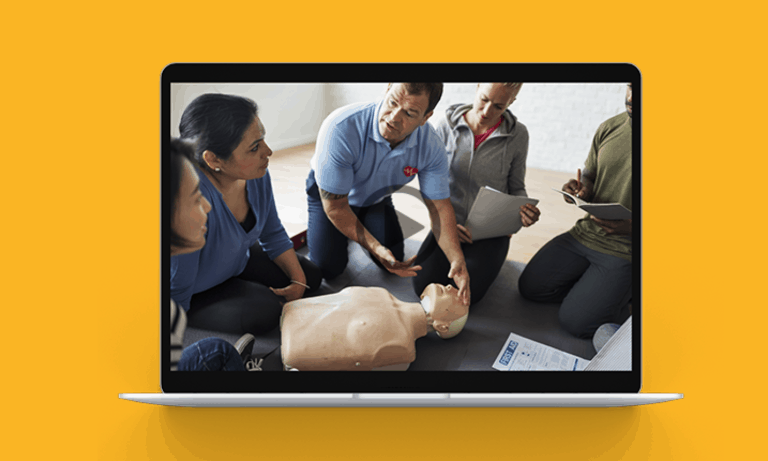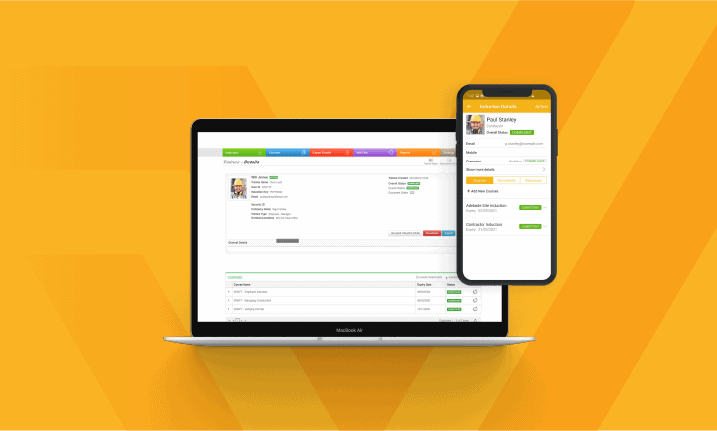

Manual handling injuries can occur at just about any Australian workplace. While healthcare, community service, and manufacturing workers record some of the highest incident rates in the country — even office workers can end up with a nasty musculoskeletal injury by lifting a heavy box of stationery the wrong way.
We’re all very focused on COVID-19 compliance and infection controls right now but our overall WHS responsibilities have not changed. If your workers are engaged in any type of lifting, carrying, or repetitive tasks they are still just as vulnerable to muscle strain and injury as they were 3 months ago.
This blog uncovers the 6 essential steps for streamlining your manual handling inductions and training — and making sure the training you provide will actually be an effective hazard control measure.
1. Identify manual handling hazards
Get started by remembering WHS Compliance Rule # 1 — identify the actual risks and hazards at your workplace. Don’t just dive in and grab a generic manual handling training module. The whole point of safety training is to teach people how to do their job safely, rather than tick off compliance boxes.
Identify manual handling hazards by:
- Asking your workers about the job tasks they find difficult to complete, cause muscle fatigue and discomfort, or put the body in awkward positions.
- Observing your people carrying out manual tasks yourself. Look for tasks that are repetitive, require sudden force, or where workers are improvising with makeshift tools eg, standing on a pallet to reach the top shelf.
- Reviewing incident and sick leave reports — look for recurring incidents and injuries that have led to musculoskeletal disorders.
- Checking industry guides and safety reports — look for patterns and high-risk areas in your industry or employment sector.
Once you’ve identified each manual handling hazard you should first look at ways to eliminate the hazard completely. Online risk management software like Rapid Risk Management can help simplify this process.
2. Implement control measures
Step 2 is the place where many organisations simply get their workers to watch a ‘safe lifting’ video and consider the job done. Did you know a recent study published by Safe Work Australia ‘Work-Related Musculoskeletal Disorders in Australia 2019’ determined that training as a control method to reduce work-related musculoskeletal risk is not effective?
The report found the most effective ways to reduce manual handing injuries was a combination of engineering controls, education, and training. You’ll want to consider the following control measures:
- Job Design — reducing work hours or shift length, increasing rest breaks and span between shift to provide longer recovery times, reducing duties or overall workload.
- Task-specific intervention — using lifting aids, reducing the size/weight of loads, changing packaging grip, altering carton sizes, redesigning the height of workbenches.
- Work environment — reducing distractions and environmental hazards (eg, noise, heat, cold), building workplace management and culture focused on safety (eg, eliminating the pressure of time), ensuring sufficient workforce.
- Education — teaching workers how to identify the manual handling risks and hazards they are likely to encounter and strategies for reporting them to management and developing a way to control them.
Training staff in safe lifting and carrying still plays a role in manual handling compliance, but your training programs should focus on the actual engineering controls you’ve adopted in the workplace.

3. Build a manual handling training module
Now it’s time to actually build your training modules. We suggest a combination of online training modules and face-to-face training sessions. Rapid Induct is a powerful training tool, allowing you to develop interactive modules that combine video, audio, images, PDFs, and quizzes.
Create modules for:
- Induction training — eg, explaining sites rules, teaching new workers and contractors about maximum load sizes, general lifting techniques, workstation setup, not to skip rest breaks, reporting hazards.
- Task-specific training — eg, demonstrating how to use lifting aids, packing sizes, taping up boxes so the load is secure.
- Risk management training — eg, identifying manual handling hazards, empowering workers to take immediate action on hazards, how to consult with safety representatives and management.
- Management training — eg, following up on reported hazards, minimum staffing levels, providing on-the-job training to sub-ordinates and proper supervision, assigning reasonable workloads.
- Refresher training — eg, scheduled refresher training in all areas every 3-6 months.
Don’t forget to have a module to support each engineering control. Example: if you’ve reduced load sizes at your manufacturing plant to make loading safer for delivery crews, you’ll need a new operating procedure for your production team. And your staff need to know about it.
4. Manage WHS inductions and job-specific training
Once you’ve built your training modules, with Rapid Induct it’s as easy as assigning different modules to individual job roles and contractors. Let’s say you’re an aged care facility, your training schedule might look something like this:
- All staff and contractors — basic induction covering safe lifting techniques, hazard reporting, and the way to setup workstations.
- Personal Carers — understanding manual handling injuries and how to avoid them, using mechanical lifting aids, situational awareness, asking for help.
- Shift Supervisors — enforcing break times and maximum loads, how to coach other in job skills, hazard awareness, risk management.
- Maintenance Contractors — using a range of mechanical tools, hazard identification and awareness, maximum working times.
Each person onsite (employee, volunteer, or contractor) can be assigned any number of training modules. Once they complete the training their direct supervisor, HR, and HSE management can all be instantly notified.
5. Schedule Refresher training
Safety inductions and manual handling training is never a ‘one-off’ exercise. Rapid Induct and Rapid Contractor seamlessly allow you to schedule refresher training to workers, volunteers, and contractors at any time. Flag appropriate managers with reminders if workers are overdue for refresher training and inductions.
6. Review manual handling hazard controls
And finally, risk reviews.
A lot of people forget that any type of safety training is actually an administrative control that supports the other control measures you have put in place. By law, all-hazard control measures must be constantly tested, monitored, and reviewed to ensure they are working and remain fit for purpose.
Let’s say you’re a hospital and introduced mechanical lifting aids, so nursing staff can safely move patients without sustaining a physical injury. Sounds easy enough: purchase the machine, set it up in the ward, show your workers how to use it — all good.
But, what if a risk management review after 6 months indicates an increase in back strain and manual handling injuries among nurses using the equipment?
A safety audit would look at the following:
- Is the machine appropriate? Maybe the machine is physically too big for the workspace and unable to be used properly. Or it’s not wide/long enough for certain patients.
- Is the training module correct? Maybe the training module has missed an important step in transferring patients from bed to bed. Or one of the videos needs more detail.
- Are people doing the training? Maybe workers are not actually finishing the training and managers aren’t checking their competency on the job.
- Is the work environment contributing to injuries? Are people working through breaks so they can knock off early. Or supervisors not replacing workers who call in sick?
A system like Rapid Auditor can be used for checking the effectiveness of your engineering, administration, and training controls. Areas of concern or direct breaches of safe work procedures can be immediately highlighted to management or tasks can be assigned to key supervisors and staff for corrective action.
Like to know more?
If you’d like more information about how to use Rapid’s workforce management system can help your organisation streamline manual handling controls and risk management, reach out to the Rapid team today.
Our qualified consultants will walk you through a free demonstration of our workforce management software and show you how to customise and configure the system for the unique needs of your industry and employment sector.







